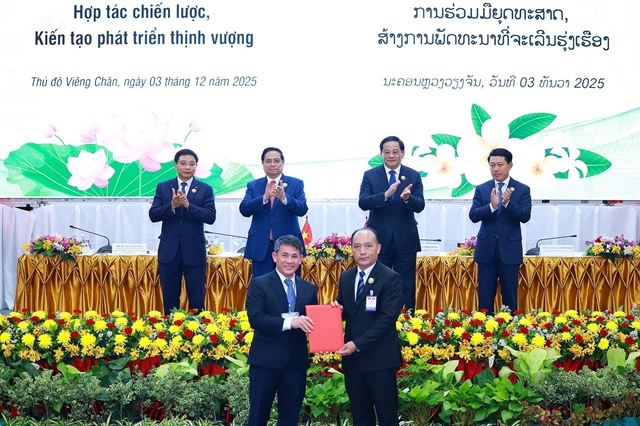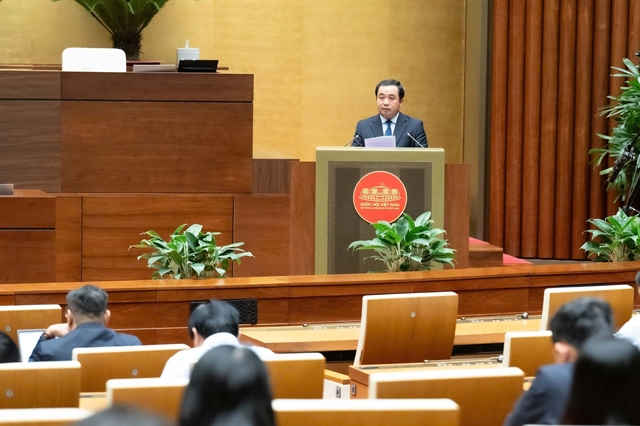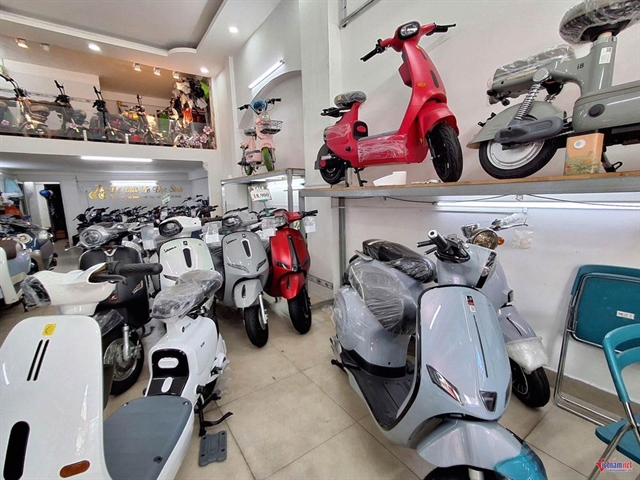 Economy
Economy

 |
| Electric bikes on display at a shop in HCM City. — VNA/VNS Photo |
HÀ NỘI — Hà Nội has set plans to ban petrol-powered motorbikes within Ring Road 1 from 1 July 2026, while HCM City plans to phase out 400,000 petrol-powered ride-hailing bikes from early 2026.
With nearly 80 million motorbikes already registered nationwide, the race is on to see which companies will benefit most from Việt Nam’s transport electrification drive.
On the ground, electric motorbikes are already widely available. In HCM City, a shop on Võ Thị Sáu Street offers models from VNĐ18–25 million, excluding VNĐ3 million for registration.
Buyers can choose between lead-acid batteries, common in entry-level bikes, and lithium batteries, preferred in higher-end models.
The segment’s roots date back to 2013 with Chinese brands like Yadea and Dibao. Before VinFast entered in 2018 with its Klara scooter, most models were low-powered and slow, with no licence required - and the market was tiny compared with petrol bikes. By 2020, VinFast led the market with 43.4 per cent share, far ahead of Pega (15.7 per cent), Dibao (11.8 per cent), Yadea (8.6 per cent) and Anbico (8.3 per cent), according to HIDS.
With Việt Nam now at 77 million registered motorbikes, 770 for every 1,000 people, the potential for growth is enormous. Government policies are driving production and adoption, and industry competition is already intense.
Experts say consumer priorities will decide the winners. Dr Nguyễn Sơn of RMIT University Vietnam notes that price, quality and design ultimately drive sales, not policy. He believes Việt Nam’s EV boom could attract large-scale investment into smart vehicle systems, advanced batteries and support services such as maintenance, battery-swapping and fleet management.
Honda Vietnam has contacted the HCM City Institute for Development Studies (HIDS) to learn more about the city’s roadmap. The company is exploring mass production of electric motorbikes and has begun testing demand by offering rentals at VNĐ1.47 million or US$57 per month.
Another Japanese manufacturer, Yamaha, introduced its NEO’s scooter to Việt Nam in late 2022, the first Asian market to receive the model, signalling its strategic interest.
Former National Assembly Economic Committee member Nguyễn Ngọc Bảo said that domestic players like VinFast currently enjoy an edge, thanks to sales strategies and charging networks. But with Việt Nam’s open economy and green transport targets, powerful foreign brands like Honda and Yamaha are likely to compete strongly.
He rejects the idea that current policies favour one firm, pointing out that restrictions on polluting two-wheelers have been discussed for 20 years, long before VinFast, but only now are incomes (nearly US$5,000 per capita) and infrastructure ready to support change. If anything, Honda and Yamaha have had ample time to adjust their production line, given their established positions in the market and capital.
MotorCycles Data reports that in the first half of 2025, Việt Nam’s two-wheeler market grew 19 per cent year-on-year to 1.6 million units. Honda and Yamaha sales rose 6.2 and 20 per cent respectively, while VinFast’s electric motorbike sales jumped 501 per cent, maintaining its lead in a rapidly expanding segment. Yadea followed with 37.5 per cent growth, ahead of Dibao, Pega and others. —VNS




